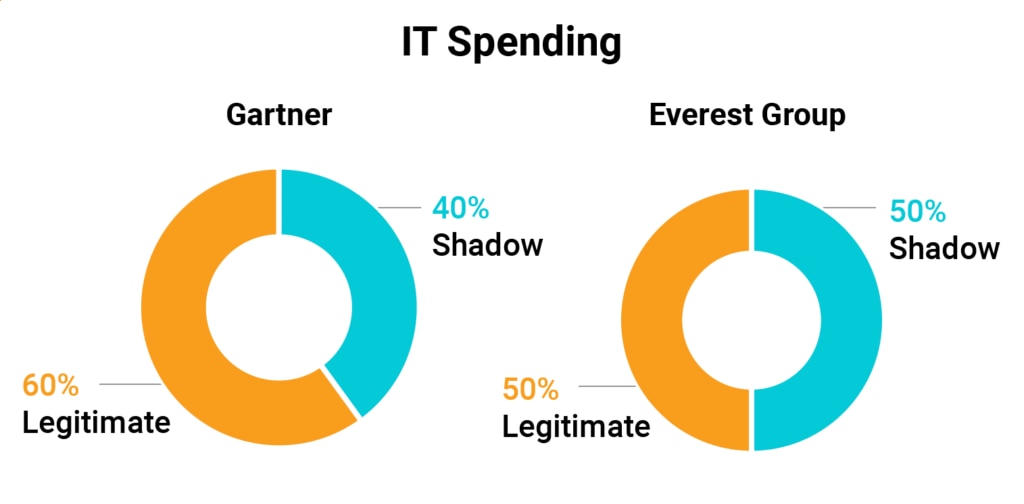Reining in costs and ensuring your IT organization maximizes its technical ROI is a delicate balancing act of office politics and well-rooted processes. IT cost challenges tend to vary from business to business, but they have one thing in common: they’re all manageable. Taking the time to study the most common IT revenue black holes starts with developing an in-depth understanding of how each one can affect IT productivity and the business’s bottom line.
The Cost of Reactive IT Operations
IT departments engaged in reactive IT are those whose only goal is keeping the lights on. Servers are upgraded only when drive arrays fail, while SQL database storage becomes a conscious consideration only when records fail to store.
Unfortunately, this remains the default state of many organizations today. Fighting fires is still IT’s full-time job, leaving little or no time for more productive activities to deliver more bottom-line benefit and move the company forward.
A simple way to start on a plan to reduce IT costs adopting a proactive approach to systems maintenance. This means reducing unplanned outages by replacing high-priority fixes with regularly scheduled maintenance windows, reducing the potential of a systems failure.
An ideal design of a proactive IT approach would be an 80/20 ratio, with 80% of your IT department’s time being used to plan activities in detail, and the remaining 20% spent on unexpected maintenance items.
Automate the Manual
The manual management of IT systems is another potential area to target to recoup IT costs. While some IT tasks require the vigilance of an experienced engineer, a majority of IT tasks should qualify for automation, at least partially. Some notable tasks that soak up IT time and labor budgets include system mapping, patching, backups/archive management, device management, and
security monitoring.
Any one of the above has automation tools standing at the ready to unburden IT staff. Endpoint management solutions provide the ability to automate many of the tasks used to manage devices, software, and applications from one platform. Network and
infrastructure monitoring tools provide scripted automation and visibility into routine tasks, such as
intelligent mapping, which helps eliminate manual inefficiencies and the potential for mistakes.
Shadow IT Can Threaten More Than a Budget
The term “shadow IT” has existed since the birth of the IT department. While IT attempts to move the user base toward standard hardware and software platforms, certain people or departments go rogue, using unapproved tools and devices to perform their tasks. Shadow IT can have an undermining effect on IT departments, but it can also introduce serious security concerns and expose a company’s valuable data to unwanted eyes.

The causes of shadow IT can vary widely, but the most common causes are IT’s inability to provide users with the right tools or an inability to respond to evolving business demands. Eliminating shadow IT takes a two-pronged approach: align IT assets to the appropriate user groups and a focus on shifting IT spending from shadow assets to those properly vetted by the organization. Although most of you won’t be in any hurry to allow Dropbox installations on company devices, you’ll find yourself with a better-equipped and business-supportive infrastructure.
IT Sprawl Can Drag Operations to a Crawl
Siloed. Ad hoc. Independent. These words all carry with them the same general definition when they refer to systems on your network: costs. Whether it’s departmental applications using data incompatible to core business systems or having multiple underutilized servers soaking up electricity and licenses while you bring more online, IT sprawl can quickly cause an IT budget to collapse under its own weight.
Agile. Managed. Responsive. These three words will transform your operations, and they’ll keep your IT budget and processes running smoothly. The elimination of sprawl will be an involved process and may at first add even more costs to an already thin budget.
However, the aftereffects of eliminated sprawl can
maximize the ROI of your infrastructure through the development and execution of an IT infrastructure plan leaving no stone unturned.
Avoid Vendor Lock-in
How many of you look at the details of your smartphone bill before you submit payment? In this day of convenient automated payment withdrawals, it can be months, if not years, before a mistake is noticed. This same scenario can apply to IT departments, where all too often vendors are paid with barely a glance at the bill, often simply because it’s a longstanding relationship. Or maybe there’s a lack of initiative to shop around for better products or negotiate a better rate.
Conducting vendor relations in this way is bad for business in many ways. Using this approach will expand the risk of fueling IT sprawl through a lack of central management of IT services and for licensing you may no longer need. Also, not taking a proactive approach in vetting each vendor may mean you’ll have to deal with a lack of product options down the road or be left with a product or service that no longer performs to industry standards or to business requirements.
Take Control and Get Some Sleep
When you don’t manage your IT costs appropriately, the challenges will never end. However, you can better align your IT budget with the expectations of the business, as well as your IT staff, by seeking out and eliminating the common causes of revenue leakage. In taking a firmer grasp over operations, you’ll save your department and your company significant amounts of time and money.
When you’re ready to start saving money, consider bringing in a trusted partner like SolarWinds. Our expertise in
cost optimization solutions can show you where you can save the most, and improve your IT operations, so you’re being proactive, rather than reactive, which may even help you sleep better.
Learn how enterprises can gain end-to-end IT operations visibility across their on-premises and cloud instances with
SolarWinds Observability Self-Hosted (formerly known as Hybrid Cloud Observability). With flexible, node-based licensing, SolarWinds Observability Self-Hosted (formerly known as Hybrid Cloud Observability) offers total cost of ownership advantages through a comprehensive full-stack solution.
 The causes of shadow IT can vary widely, but the most common causes are IT’s inability to provide users with the right tools or an inability to respond to evolving business demands. Eliminating shadow IT takes a two-pronged approach: align IT assets to the appropriate user groups and a focus on shifting IT spending from shadow assets to those properly vetted by the organization. Although most of you won’t be in any hurry to allow Dropbox installations on company devices, you’ll find yourself with a better-equipped and business-supportive infrastructure.
The causes of shadow IT can vary widely, but the most common causes are IT’s inability to provide users with the right tools or an inability to respond to evolving business demands. Eliminating shadow IT takes a two-pronged approach: align IT assets to the appropriate user groups and a focus on shifting IT spending from shadow assets to those properly vetted by the organization. Although most of you won’t be in any hurry to allow Dropbox installations on company devices, you’ll find yourself with a better-equipped and business-supportive infrastructure.







